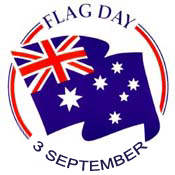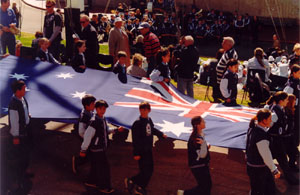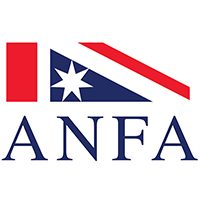Planning for National Flag Day
Brief Overview of National Flag Day
Australian National Flag Day commemorates the day in 1901 on which the Australian National Flag was first flown. The event took place at the Royal Exhibition Buildings, Melbourne in the presence of Australia’s first Prime Minister Edmund Barton. Following are classroom activities to recognise and celebrate National Flag Day – 3 September.

The Lesson
Collect a variety of material on the subject of the Australian National Flag. In the days leading up to 3 September, provide students with details of Internet and the other resources you’ve collected to learn more about the Australian National Flag. Some official Australian government websites are:
- http://www.parliament.curriculum.edu.au
- http://www.pm.gov.au/aust_focus/nat_symbols
- http://www.itsanhonour.gov.au
- http://www.curriculum.edu.au/democracy
Ask students to record in their notebooks any facts they find that they didn’t know before about the flag or National Flag Day. Set aside a special time a day or two before National Flag Day for students to share the facts they’ve collected. Those facts might include a few of the following:
-
- In 1901 the Federal government held a design competition to find a flag for the new Australian nation. The competition received 32,823 entries from Australia and overseas. At an official ceremony on 3 September 1901 the Prime Minister of Australia, Edmund Barton, announced that five entrants, who had submitted similar designs, were to share the honour of being declared the designers of Australia’s own flag. Information about these individuals can be found at Ivor Evans. One of the designers of the Australian flag was Ivor Evans, a 14 year old schoolboy.
-
- The Australian National Flag flew over the site for the national capital in 1908. Today it is the only national flag that flies, or has ever flown, over an entire continent.
-
- The Australian Army officially adopted the Australian flag as its saluting flag in 1911. The Royal Australian Navy was formed in 1911 and all of its warships have used the Australian flag since then.
-
- Over the last 100 years Australia’s flag has travelled to many locations around the world in the custody of our soldiers during war and conflict. Learn more about the ANZAC Tradition here.
-
- Australian National Flag Day was observed for the first time in 1984 at Hyde Park, Sydney. It was the 83rd anniversary of the first flying of Australia’s flag of “Stars and Crosses”.
-
- In 1996, the Governor General, Sir William Deane, officially established Australian National Flag Day as an annual national celebration. Download a copy of the proclamation from here. The Australian National Flag belongs equally to all Australians. Discuss why returned servicemen in particular might have strong feelings about a special day to celebrate the national flag.
-
- The Australian National Flag has been used to represent our athletes at every Olympic games since London in 1908. Australia has played host to the Olympic games on two occasions, Melbourne 1956 and Sydney 2000.
- The flag that flies over parliament house in Canberra measures 12.8 by 6.4 metres. The flag pole cost $4.4 million to manufacture in 1988. It is one of the biggest stainless steel structures in the world, weighing 220 tonnes and reaching 81 metres high!
Recommended Procedure for Conducting Flag Promise
The aim of The Flag Promise is to encourage the appreciation and acceptance of the principles of citizenship.
- Assemble audience in position facing ceremonial area.
- Enter Flag escort party holding flag outstreatched and parallel to ground (as pictured below).
- Presenter outlines the importance and significance of The Flag which is the chief national symbol by law, custom and tradition.
- Escort party hold The Flag level using their left hand and place their right hand, with palm and arm outstretched, on the field of The Flag.
- Audience, stands to attention, face The Flag and recite The Promise.
- Escort connect The Flag to the flagpole halyard (rope) and hoist to masthead (drum roll or silence).
- Presenter leads all assembled in three hearty cheers for… “The Flag of Australia and the Nation which it represents”.
- Audience sing the National Anthem (two verses recommended).

Related Resources
-
- A timeline of the Australian flag for students. Click Here.
-
- More facts about National Flag Day can obtained from here.
-
- The rules of flag etiquette are designed to encourage proper use of the flag. They can be accessed at Flying the Flag.
-
- Obtain a flag for your class by contacting your local Federal MP. Contact details can be found at http://www.aph.gov.au/house/members/index.htm.
- Learn more about basic flag terms and the format of flags at Making a Flag
